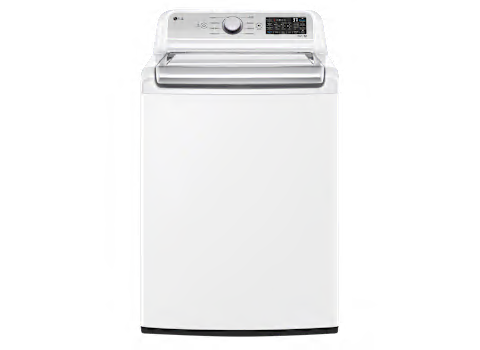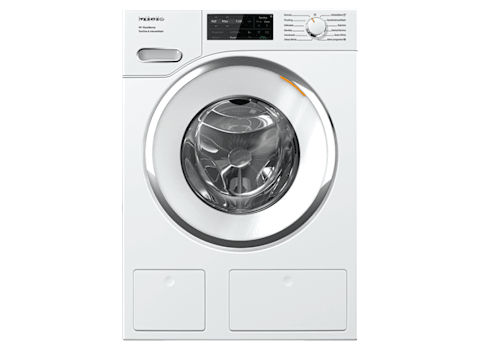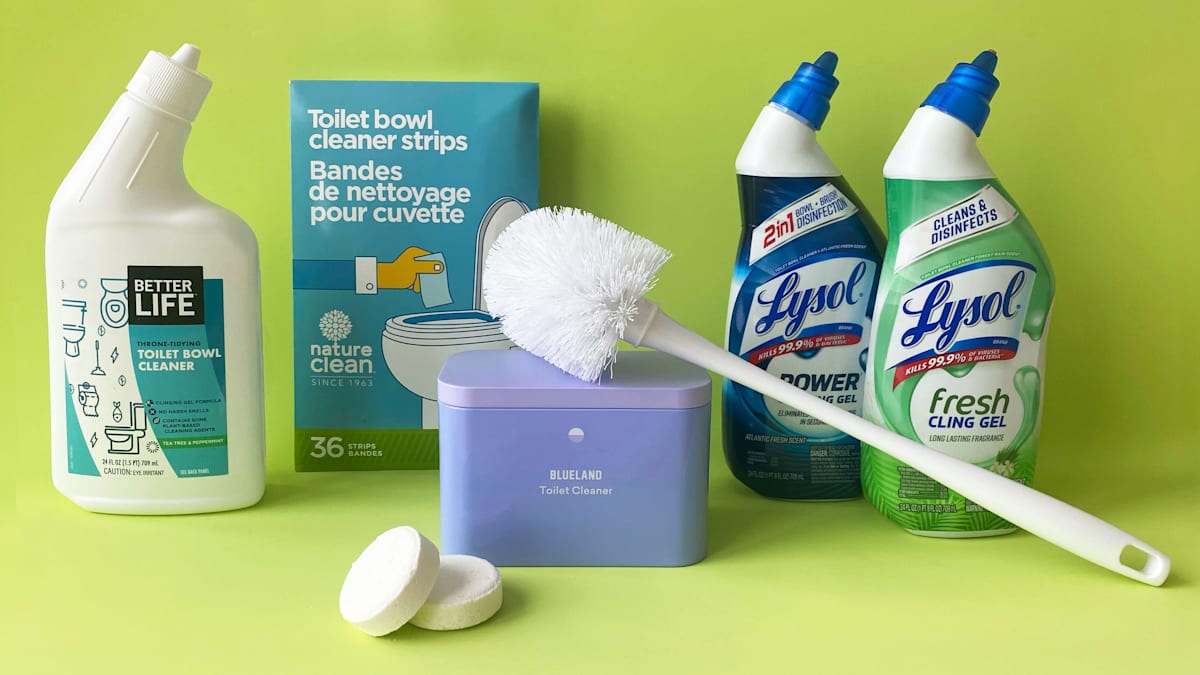How to Read an EnergyGuide Label

Looking to buy an energy-efficient washing machine? These familiar yellow-and-black labels can help you make a good choice.
Federal law requires retailers to provide EnergyGuide information for all models they sell.
By Jennifer Cook
EnergyGuide labels, those familiar yellow-and-black tags you see attached to many major appliances, have been around for more than 40 years. But that doesn’t mean consumers know how to use them to choose an energy-efficient appliance.
Knowing how much energy a specific appliance uses annually compared with similar machines can help you make a smarter purchase that will save you money in the long run. That’s because there are really two price tags when you buy an appliance: first, the purchase price; and second, the cost of using the model over its lifetime. That second price tag is reflected in your monthly utility bills—for electricity or gas and possibly water, depending on the appliance.
Here’s a quick look at EnergyGuide labels and how they can help you choose—as an example—a more energy-efficient clothes washer. Below, we’ve also included links to the most energy-efficient washers from each type that CR tests, including front-loaders, top-load agitators, HE top-loaders, and compacts.
Some Background on EnergyGuide Labels
The first EnergyGuide labels appeared on appliances in 1980, thanks to the Energy Policy and Conservation Act of 1975, which required the Federal Trade Commission to issue and administer energy-efficiency ratings for a broad range of home appliances. Appliances that must carry the tag currently include refrigerators, freezers, dishwashers, water heaters, clothes washers, room and portable air conditioners, furnaces, central air conditioners, heat pumps, ceiling fans, pool heaters, boilers, and televisions, as well as plumbing and lighting products. A label for clothes dryers is now being considered.
The FTC oversees what information is included on the labels as well as requirements for their display. It also oversees any changes to the labels and whether a new type of appliance is added to the list. The Department of Energy oversees testing procedures as well as minimum energy-efficiency standards for the covered products, which form the basis of the information on the tag. Last spring, the energy-efficiency standards for washers and dryers were updated for the first time in more than 10 years; consumers are likely to start to see savings from those new standards in 2028, when they take effect.
The FTC updates the tags every five years, taking into account technological advances, revisions to the DOE’s minimum energy-efficiency standards, and fluctuations in the average national cost of energy. The last update was in October 2022, and new data was incorporated into the tags starting about nine months later; that means the tags you’re seeing on appliances now should be fairly current. The next update is due in 2027, although the FTC could revise them earlier, “if there’s some sort of development in DOE test procedures or technology that radically changes the range information,” says Hong Park, an attorney with the FTC.
By law, the bright yellow-and-black tags must be visible to consumers—for example, displayed on showroom models. If you can’t find a tag on the outside or inside of the appliance, Park recommends checking the manufacturer’s or retailer’s website, next to the price information. It may take some online searching to find them; make sure to have the specific model number you’re considering to get the right information.
What an EnergyGuide Label Can Tell You
The tags’ primary purpose is to allow consumers to compare the energy efficiency—and thus the operating cost—of products within the same category. For washers, the information on the tag allows you to compare the efficiency of different standard capacity washers, and, separately, for compacts ("standard” capacity washers have a tub that’s 1.6 cubic feet or larger; “compact” washers have a tub that’s less than 1.6 cubic feet). For example, they can allow you to compare the energy efficiency of a standard-capacity front-load washer with that of a standard-capacity top-loader. You can also compare the efficiency of two standard-capacity top-loaders, or two compact-sized machines.
Currently, estimated costs included on washer labels are based on an average of six wash loads a week—a figure gleaned from the Residential Energy Consumption Survey of U.S. households collected every five years by an arm of the DOE (the next survey is in 2025)—and a national average electricity cost of 12 cents per kilowatt hour. The DOE provides updated average costs of electricity and gas every year. Keep in mind that your costs may be lower or higher than the estimate depending on the number of loads you wash per week and your costs for electricity (and, possibly, natural gas, if that’s what your water heater runs on).
While the kind of information on the label is fairly standard across different appliance types, there is some variation. Here’s the EnergyGuide Label for a top-load HE washer that CR recommends. Read on for details on each piece of information included on the label.
Source: Lowes
- The type of appliance (washer, refrigerator, ceiling fan, etc.) plus any features, for comparison purposes, are spelled out here. This tag tells us that this is a standard-sized clothes washer.
- The manufacturer, model name, and size of the appliance you’re considering are listed here.
- The “estimated yearly energy cost” (or “estimated yearly operating cost”) is an approximation of what you’ll pay for this specific model. The bar below allows you to compare that to the “cost range of similar models,” which provides the annual operating costs of models like this one. These figures take into account both the electricity used to run the washer as well as the energy used to heat any hot water used by the washer. (The label includes an energy cost estimate based on using an electric water heater and an estimate based on using a natural gas-powered water heater.)
- The “estimated yearly electricity use” in kilowatt hours (kWh) lets you know how much energy is needed to operate the washer for one year (lower is better). It is derived from DOE washer-model testing that produces an estimate of the average kilowatt hours used for each cycle. The result is multiplied by the national average number of wash cycles per year to arrive at the figure on the label. You can also calculate your appliance’s energy use by following the guidance on this DOE page.
- These bulleted notes provide the figures on which the estimates are based (e.g., wash loads per week) and a qualifier regarding your own costs.
- Energy Star: This washer model meets strict energy-efficiency criteria to earn an Energy Star rating. The manufacturer is allowed, but not required, to add the Energy Star logo here.
What Clothes Washer Labels Leave Out
“What’s shown on the labels for washers only tells part of the story about washer efficiency,” says Joanna Mauer, deputy director of the Appliance Standards Awareness Project, a nonprofit that works to promote energy-saving standards for appliances at the federal and state levels. “The energy cost shown on the EnergyGuide label only reflects the energy consumption of the machine itself and the water-heating energy. It doesn’t tell you anything about how well the washer removes moisture at the end of the cycle.” That’s a big component of wash-day energy use because drying represents about three-quarters of the energy used in cleaning a load of laundry. When a washer removes water from wash loads more efficiently, that translates to reduced dryer time—and less energy use.
In addition, the label doesn’t capture the percentage of a washer’s operating costs that are associated with water or wastewater bills. However, DOE standards “do require that all washers meet a minimum level of water efficiency,” Mauer says, even though that information isn’t incorporated into the EnergyGuide tag. You can find information on the water efficiency of each washer we test in our washing machine ratings, where you’ll also find our washing machine buying guide and information about how we test washing machines.
Energy-Efficient Washers From CR’s Tests
Below are the highest-rated washing machines in each category (front-loader, top-load agitator, HE top-loader, and compact) that earned our highest score for energy-efficiency tests. Many of these also got high marks for water efficiency.
LG WM4000HWA
If you’re looking for a highly efficient front-loader, check out the LG WM4000HWA. We expect it to ace our tests for energy efficiency and washing performance just as its brandmate, the similar (but discontinued) LG WM3900HWA did. It’s tops in water efficiency, too (front-load washers as a category are stingiest on water use, so it’s not surprising that all but one of the 42 models we tested in this category achieved our top score in water efficiency.) This Energy Star certified machine has a stainless steel drum, and WiFi as well as automatic temperature control, and automatic bleach and detergent dispensers.
LG WT7405CW
The CR-Recommended LG WT7405CW is our second-highest-rated top-load agitator, but while we found its washing performance fell a hair below that of the top-rated LG WT8405CW, it beat out its brandmate on energy efficiency. Both models are Energy Star certified and bear CR’s Green Choice leaf, which identifies appliances with the lowest environmental impact. Both have a stainless steel tub with a generous 5.3 cubic-foot capacity as well as automatic temperature control, and automatic bleach and detergent dispensers.
Samsung WA52A5500AW
There are HE top-loaders in our ratings with higher Overall Scores (our highest-rated model in this category is the CR-Recommended LG WT7150CW) but the top score for energy efficiency goes to this Samsung. Like its LG competitor, it also got an excellent score for performance, water efficiency, and vibration, and is Energy Star certified. It doesn’t match the higher-rated LGs’ top marks for reliability, though, and owner satisfaction, based on our surveys, falls far below the LGs.
Miele WXI860WCS
The CR-recommended Miele WX1860WCS compact washer shares a top Overall Score with a similar model, the WXF660WCS, and that includes our highest ratings for washing performance, energy efficiency, and water efficiency. These 2.3 cubic-foot-capacity machines are also Energy Star certified and come with extras like WiFi, a steam option, and a stainless steel tub. Miele models, in general, rise to the top thanks to their stellar ratings for reliability and owner satisfaction, based on our surveys of CR members.
Consumer Reports is an independent, nonprofit organization that works side by side with consumers to create a fairer, safer, and healthier world. CR does not endorse products or services, and does not accept advertising. Copyright © 2024, Consumer Reports, Inc.
Source link







